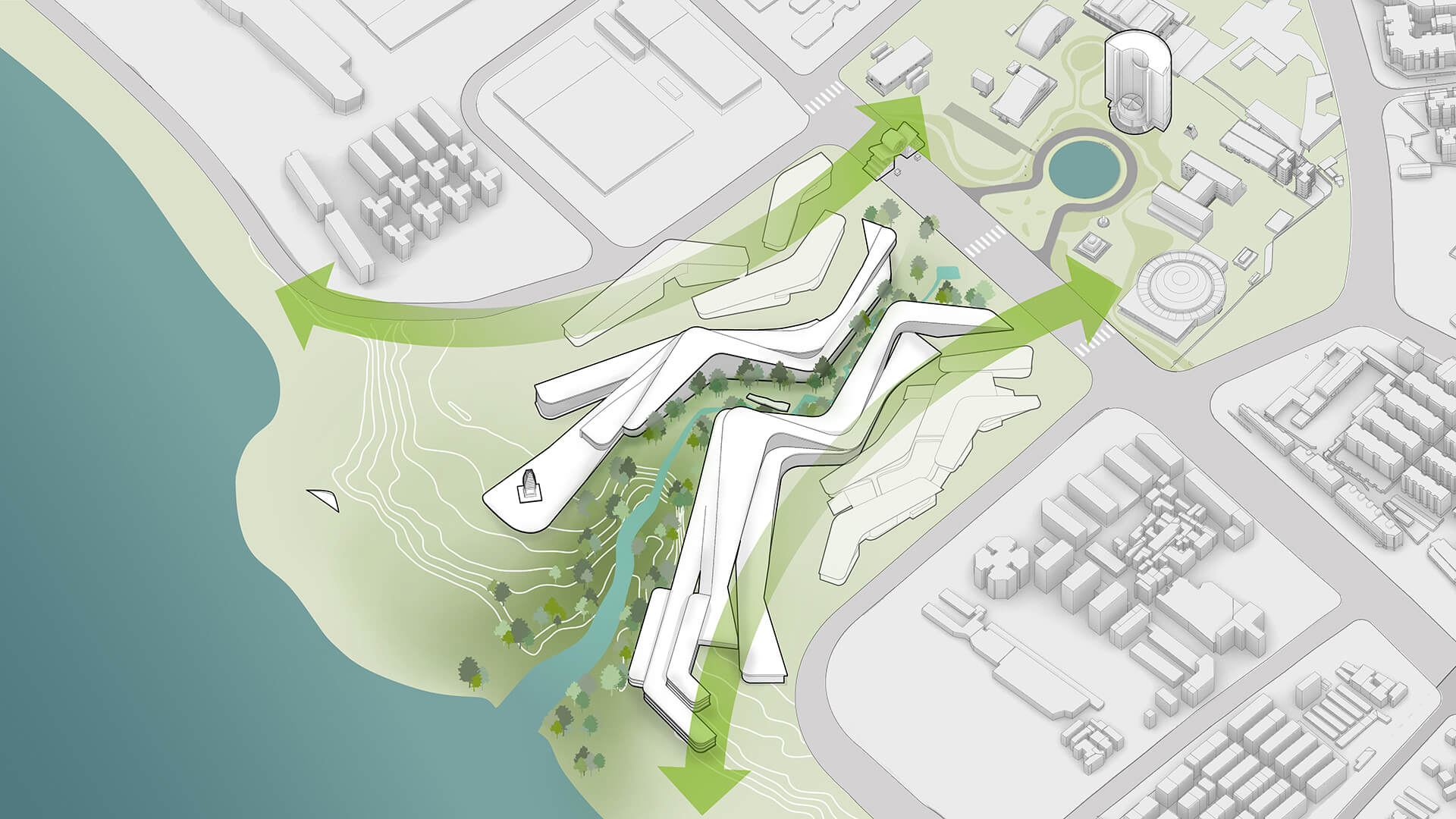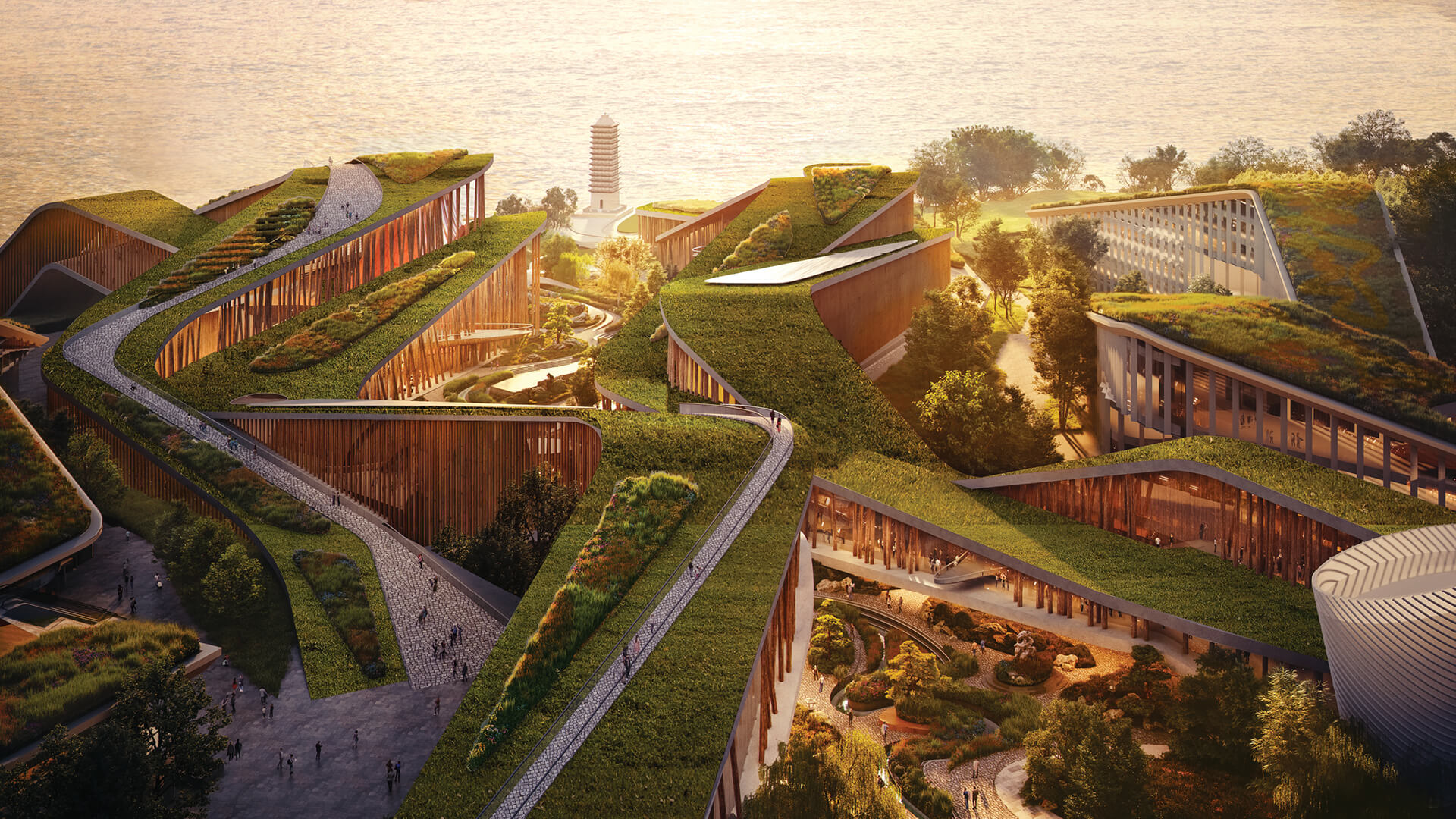At first glimpse, this campus appears to be a public park. When you look closely, you realise that it’s actually an office campus comprising a number of buildings. Multinational architecture company Büro Ole Scheeren recently showcased Wuliang Interstice, which is located in the historical city of Yibin in China. The one-of-a-kind project is a new campus and experience centre for Wuliangye, one of China’s top winemakers. Yibin is renowned for its rich culture and natural beauty; its picturesque landscape dominated by the Min and Yangtze rivers, which flow through the city, along with lush greenery and surrounding mountain ranges. Yibin is also home to Wuliangye, one of the most well-known white winemakers in China. Reminiscent of an ancient city wall, the striking new campus houses numerous artefacts, which celebrate the cultural heritage of Yibin.
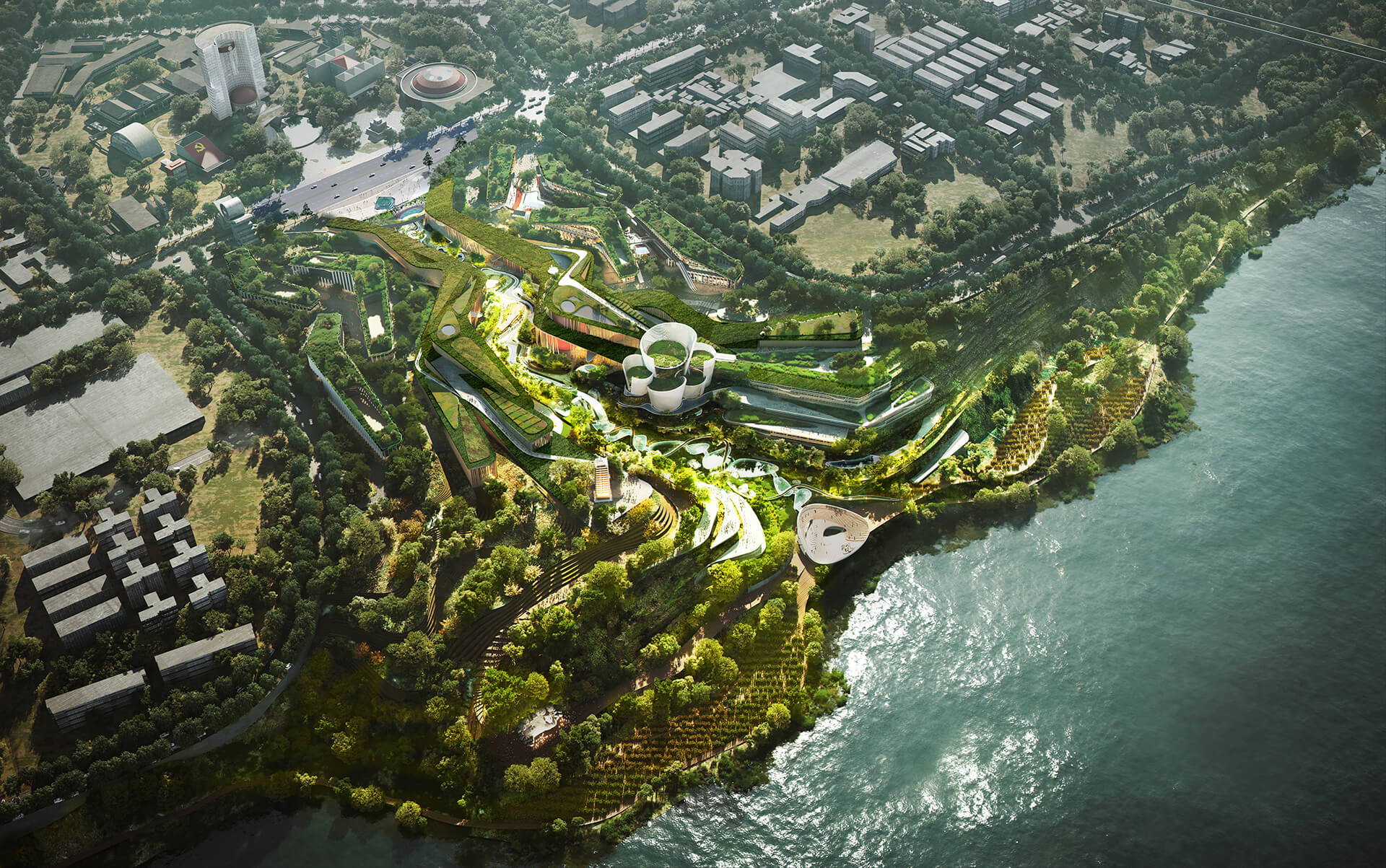
For the conceptual design of the distinctive Wuliang Interstice, Büro Ole Scheeren was inspired by the natural landscape of the city of Yibin. The campus has been carefully designed to blend in with the scenic natural surroundings. This way, nature pours within and merges with the buildings. “The brand, the history, and the wines of Wuliangye hold a strong significance in the consciousness of the city and its people. Our concept draws on this intimate connection and explores Wuliangye’s culture and history as a part of the spatial realm of the city. Inspired by the shape of the existing natural canyon, two folding parallel structures form a dynamic interstitial space. While connecting the adjacent river to the existing headquarters and wider campus, the architecture creates a central space of a fluid indoor-outdoor narrative around nature and wine culture. Moreover, historic artefacts and contemporary architecture enter a dialogue between past, present, and future,” states Ole Scheeren, Architect and Principal, Büro Ole Scheeren.
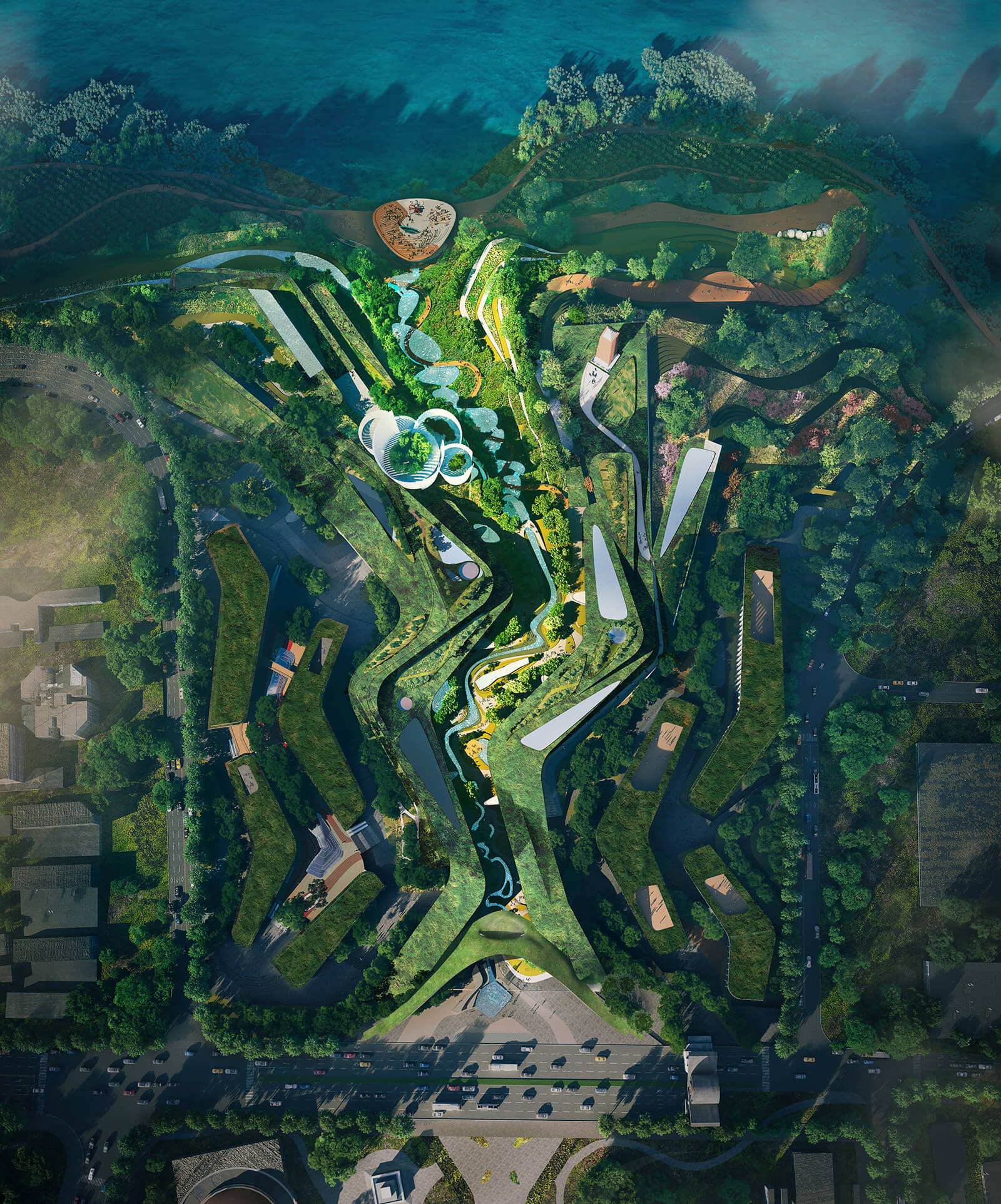
The Büro Ole Scheeren Group is an international architecture firm, which offers architecture, interior design, and urbanism consulting as well as research and project management. With offices in Hong Kong, Beijing, Bangkok, New York, London, and Berlin, the firm conceptualises and executes path-breaking building projects and urban developments. In particular, the Wuliang Interstice campus pays homage to the culture and landscape of the city of Yibin and the legacy of Wuliangye. “This is a story about the culture and appreciation of wine… and a story about nature and its inspirational beauty and powers. In his poems, Ouyang Xiu, the great poet of the Song Dynasty mused about the intimate relationship and emotional connection between the love of wine and the pleasures of enjoying culture and nature. With our design we explore this conceptual and lyrical space and weave a series of architectural narratives through the elements of nature—mountains, valleys, waterfalls, and rivers. The existing topography of a natural canyon carving the land is extended through two undulating, linear buildings that form a continuous rhythm with the landscape and inscribe an open space of nature and storytelling: Wuliang Interstice,” remarks Scheeren.
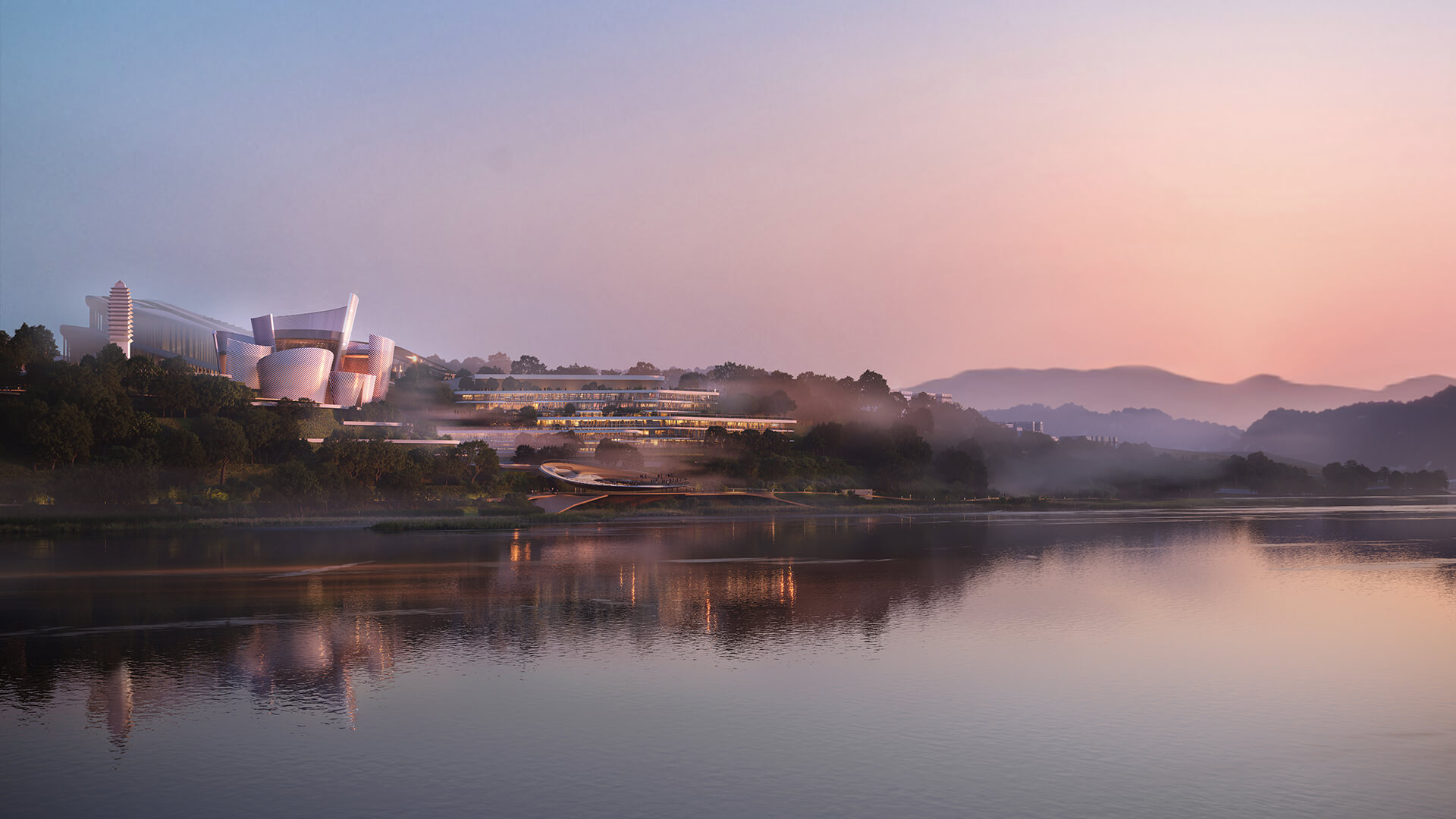
“Framing the Wuliang Interstice on either side are Wuliangye World and the Wine Culture Exhibition Centre, rising gently as topographical architectures and meandering through the site to merge with the natural canyon reaching the Min river. A small stream, flowing through the space between the buildings following the narrative of the storytelling connects the Wuliangye Campus with the river, the city, and symbolically, the world beyond,” adds the Germany-born architect. Wuliangye World is an experience centre where guests can engage with the tradition of winemaking, while the exhibition centre tells the story of wine culture through a series of themed exhibition halls.
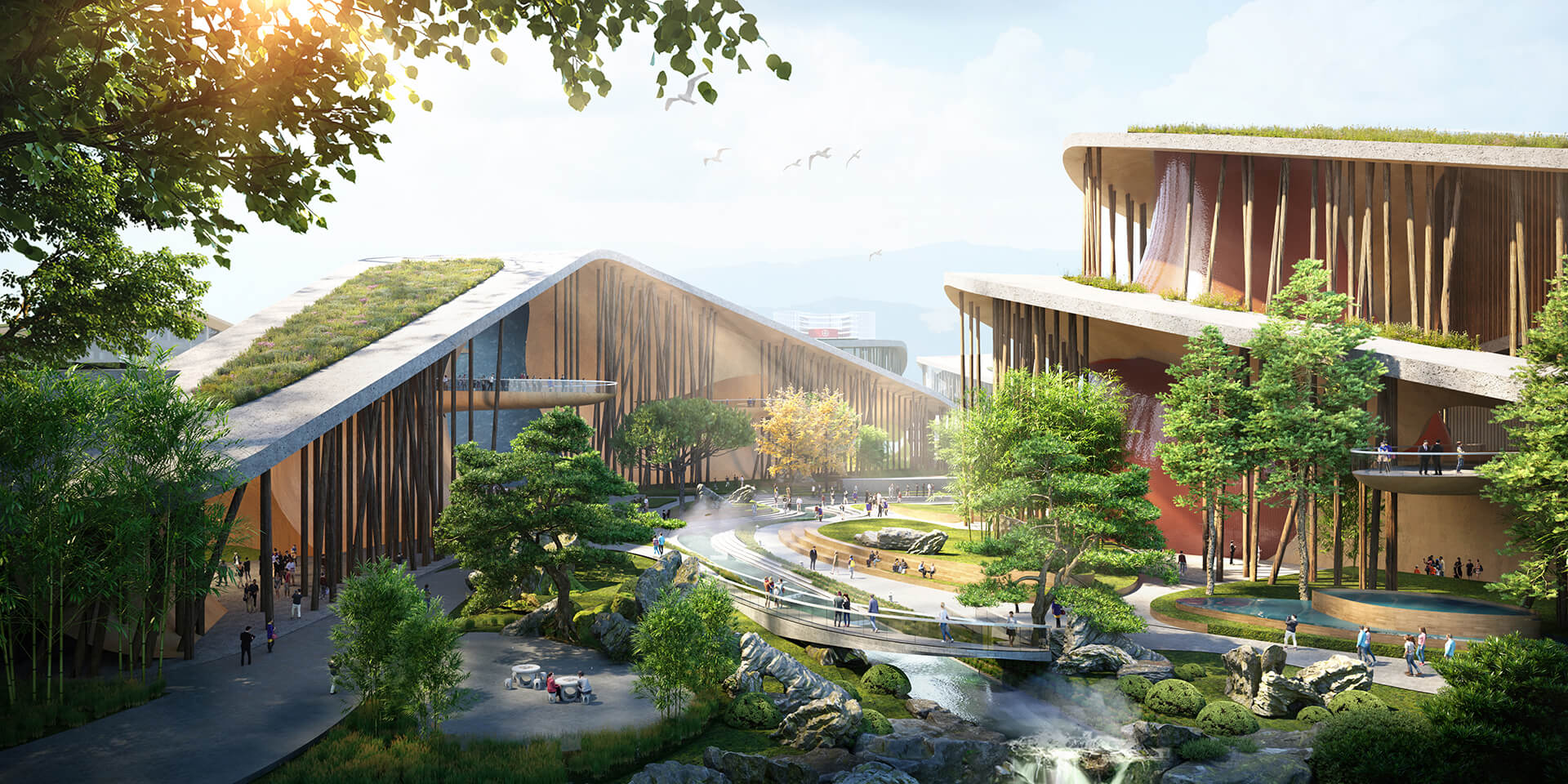
Just like an ancient city’s wall, the Wuliang Interstice campus houses a number of artefacts that pay homage to the cultural heritage of Yibin. Moreover, toward the central space of the interstice, the building’s façade design is clad in a permeable structure composed of wood architecture elements and wooden columns that are evocative of Yibin’s bamboo forest. “The Wuliang Interstice inscribes a journey through time—a relic of the ancient city wall, a pagoda and a buddha sculpture are carefully preserved and enhanced by the new architecture of the Wuliang Interstice and tell about the rich cultural heritage of Yibin. With abstract associations to Yibin’s Sea of Bamboo, the world’s largest bamboo forest, the design features a permeable wooden façade screen as a spatial interface between the buildings and the central interstice. The boundary between landscape and buildings is dissolved through a multi-story zone featuring randomised large scale wooden posts, blurring the boundary between inside and outside, and allowing visitors to flow through a series of rich and diverse spatial environments. Here, one can freely stroll, have a rest or chat in the bamboo forests, immersed in the beauty of nature, architecture and spatial narrative,” concludes Scheeren.
